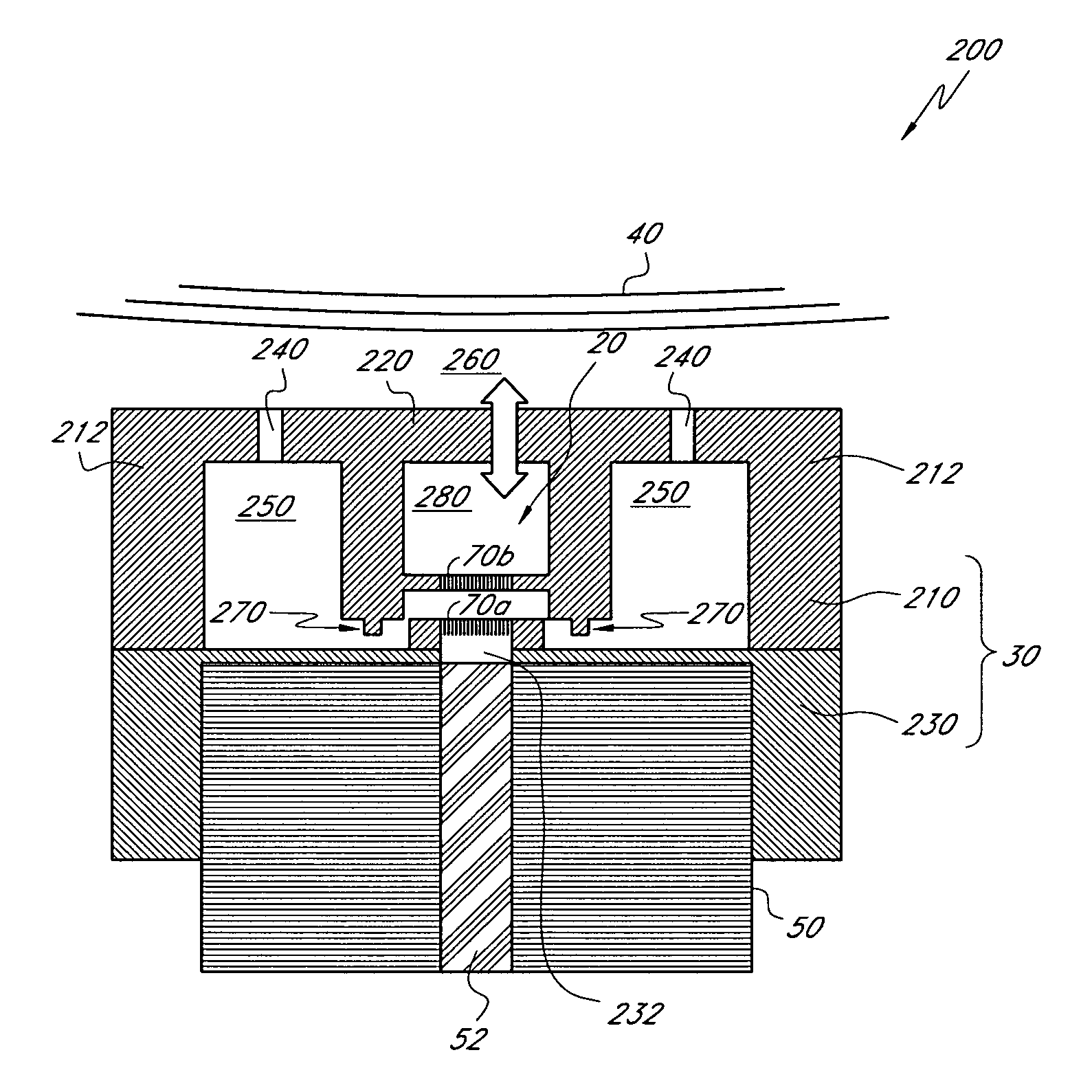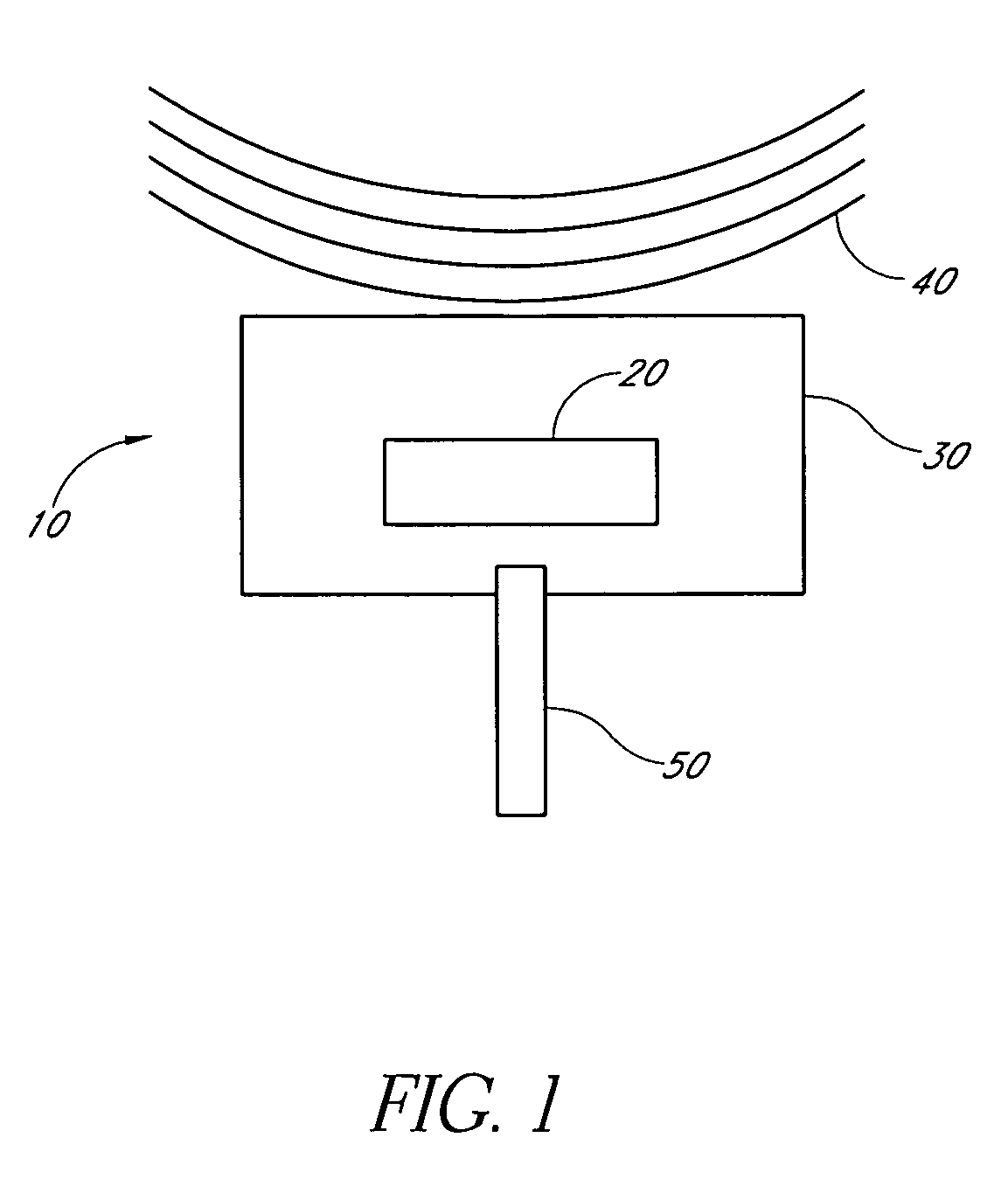Photonic crystal structure sensor
a technology of photonic crystal structure and sensor, applied in the field of optical fiber compatible sensor systems, can solve the problems of not being able to respond well to frequencies above a few hundred hz, and be bulky, so as to improve the temperature stability of the acoustic sensor
- Summary
- Abstract
- Description
- Claims
- Application Information
AI Technical Summary
Benefits of technology
Problems solved by technology
Method used
Image
Examples
Embodiment Construction
[0094]Present-day optical resonators which have sufficient quality factors to achieve sensitivities comparable to those of piezoelectric transducers are typically large and impractical to fabricate, install, align, and operate. In contrast, certain embodiments described herein comprise an acoustic sensor based on optical resonators formed by photonic crystal slab (PCS) structures with apertures which are orders of magnitude smaller than those of traditional optical cavities. The small size of certain such embodiments provides a sensitivity comparable to that of piezoelectric and capacitive displacement sensors for frequencies larger than about 10 kHz. Photonic crystal structures comprising a pair of PCSs can be used to provide notch and bandpass transmission and reflection filters, and such structures can be utilized in acoustic sensor systems compatible with various applications (e.g. oil exploration, undersea acoustic wave detection).
[0095]Certain embodiments described herein prov...
PUM
| Property | Measurement | Unit |
|---|---|---|
| acoustic frequencies | aaaaa | aaaaa |
| acoustic frequencies | aaaaa | aaaaa |
| acoustic frequencies | aaaaa | aaaaa |
Abstract
Description
Claims
Application Information
 Login to View More
Login to View More - R&D
- Intellectual Property
- Life Sciences
- Materials
- Tech Scout
- Unparalleled Data Quality
- Higher Quality Content
- 60% Fewer Hallucinations
Browse by: Latest US Patents, China's latest patents, Technical Efficacy Thesaurus, Application Domain, Technology Topic, Popular Technical Reports.
© 2025 PatSnap. All rights reserved.Legal|Privacy policy|Modern Slavery Act Transparency Statement|Sitemap|About US| Contact US: help@patsnap.com



